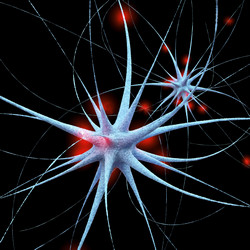New therapies for neurodegeneration
Polyglutamine diseases are a group of neurological conditions that are genetically caused by a repeat of the trinucleotide CAG in a specific gene. At the protein level this translates into extra glutamine residues in the polypeptide sequence, ultimately leading to protein misfolding. Characteristic examples of polyglutamine diseases are Huntington's disease and bulbar muscular atrophy (SBMA). In SBMA, expansion of glutamine residues in the androgen receptor (AR) causes loss of lower motor neurons in the brainstem and spinal cord. Interestingly, the disease is gender specific, with only males being affected. The reason behind this intriguing phenomenon is that the expanded AR only becomes toxic when it binds its natural ligands (testosterone and dihydrotestosterone). Ligand binding induces a number of post-translational modifications implicated in disease pathogenesis. Currently, there is no treatment for SBMA. The key objective of the EU-funded POLYQ MUTANT AR/SBMA (SBMA as a model of polyglutamine diseases: Generation of a suitable cell system to study the post-transcriptional modifications of mutant androgen receptor and to discover potential therapeutic drugs) project was to outline the molecular mechanisms underlying SBMA pathogenesis and design novel therapeutic strategies. Identification of which post-translational modifications get triggered in SBMA could point to specific drugs to target them. Project work has focused on the activation of protein kinase A (PKA) by cyclic AMP. Scientists have obtained induced pluripotent stem cells from SBMA patients differentiated down the neuronal lineage. So far, they have discovered that PKA signalling protects SBMA cells from the toxicity of the expanded AR by reducing its phosphorylation. Similarly, stimulation of PKA by a neuropeptide pituitary adenylate cyclase activating peptide (PACAP) reduced phosphorylation. Conversely, inhibition of endogenous PKA had the opposite effect. In another experiment, the researchers found that forskolin, a plant extract that increases levels of cAMP, still reduced phosphorylation in the presence of PACAP. Overall, POLYQ MUTANT AR/SBMA results indicate that reduced phosphorylation reduces the ligand-induced cell toxicity in motor neuron-like MN1 cells. Clarifying the relationship between AR and PKA is expected to help scientists identify the molecular pathogenesis axis in SBMA. Using the proteins involved in the PKA signalling pathway could counteract neuronal loss in SBMA and improve the clinical picture of affected individuals.







